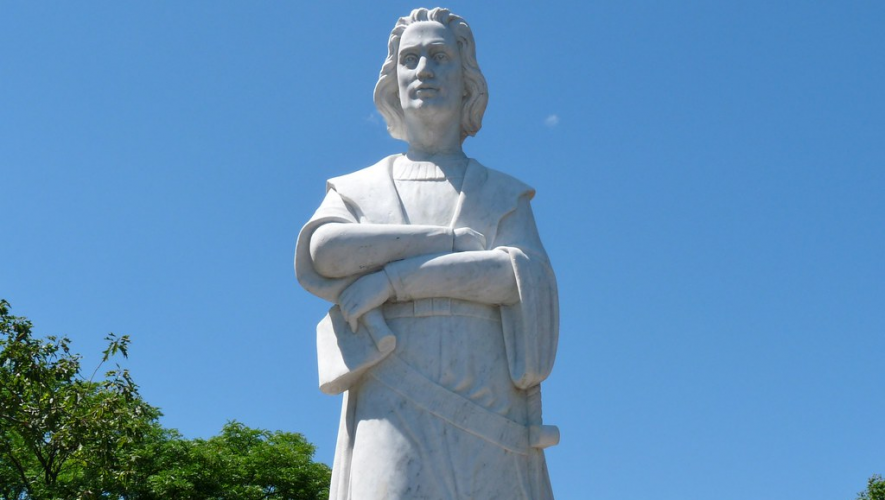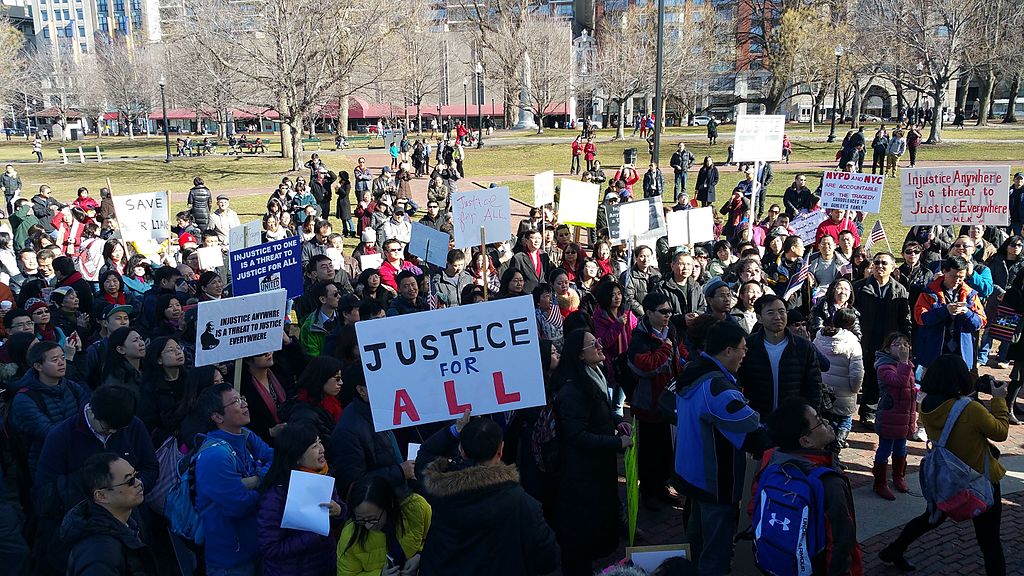Who deserves to be a statue? Recently, activists around the world have answered this question with “not a murderer”—a statue of slave owner Edward Colston was thrown into a river in Bristol, UK; a confederate statue was hung in Raleigh, North Carolina; and Boston’s very own Christopher Columbus statue was beheaded.
Columbus’s statue was until very recently located in Waterfront Park, at the edge of the North End. The park was opened in 1976 by the Knights of Columbus, a Catholic service organization that (like the North End itself) had a notable Italian American population, and the statue was added in 1979. For many, it represented the triumphs of Italian immigrants, who faced significant persecution in the United States particularly during the nineteenth century. The statue’s beheading and removal for evaluation by the city sparked a vigorous debate about Columbus’s legacy, the statue’s future in Boston, and the role of monuments in preserving history.
Statues are not, in and of themselves, history. They are secondary sources, constructed afterwards (as opposed to primary sources, which are contemporary first-hand accounts). To burn Columbus’s journal would be to destroy history; to tear down a statue constructed nearly five hundred years after his death would not.
Functionally, a statue serves one of two purposes: to celebrate history or to educate. They can serve a third purpose as public art, but I won’t waste your time telling you why I don’t believe Columbus’s statue can stand on its aesthetic merits alone; you can look at his face for yourself. So, let’s take the time to evaluate Boston’s Columbus statue as a commemoration of an individual and as an educational resource.
Columbus was born in 1451, the son of a wool merchant in Genoa, in what is now Italy. He hoped to find a passage to India without traveling overland or circumnavigating Africa, though his contemporaries knew India was a lot farther west than he was planning to sail. After being turned down by the monarchs of Portugal and England, he was funded by Spanish monarchs Ferdinand and Isabella, and set sail in 1492 with three ships. Columbus eventually landed in Hispaniola, which is now Haiti and the Dominican Republic. There, he set up a colony, met Taíno people already living there, kidnapped ten to twenty-five Native people, and returned with them to Spain. Only seven or eight of his kidnapped victims arrived in Spain alive.
Columbus was granted governorship of Hispaniola and returned to the Caribbean three more times. He enslaved many more Native people—some were kept in Hispaniola while others were sent to Europe—and killed them by spreading diseases like smallpox to which they lacked immunity. He and his men massacred Native people: burning them, hanging them, attacking them with dogs, and driving them to suicide.
Taíno people over the age of fourteen were expected to pay a tribute of a hawk’s bell full of gold dust or twenty-five pounds of spun cotton every three months; those who failed to do so had their hands cut off. Mutilation and torture was used to control Spanish settlers as well; documents tell of one woman who was stripped naked and paraded through town before having her tongue cut out for suggesting that Columbus was of lowly birth. In 1500, Columbus’s governorship was revoked and he was investigated for the allegations of brutality. Taíno population numbers are still widely debated, but some estimates say that as much as 85 percent of the Native population was dead by the early 1500s.
Although he wasn’t the first person (or even the first European) to reach the Americas, Columbus does deserve credit for connecting the Eastern and Western Hemispheres in a way they had not been before. However, acknowledging his role in history is vastly different from putting the man on a literal pedestal. Indigenous activists have clearly laid out why public statues of someone who so horrifically brutalized their ancestors make them feel unwelcome.
Still, some people argue that this is a slippery slope; everyone has skeletons in their closet and Columbus’s just happened to be legion and literal. Martin Luther King Jr. cheated on his wife and Mahatma Gandhi was an anti-Black racist; no one is perfect. This is completely true. Statues created to celebrate people will always be problematic, because even those of us who accomplish monumental things are only human.
So instead of lionizing an individual, statues should be constructed for educational purposes. The Waterfront Park statue fails this test as well. Instead of meaningful information about who Columbus was, its pedestal is etched with the names of its donors. Even if it did have information about Columbus himself, the statue would still fail to educate the public, because everything about him that could fit on a plaque is already common knowledge. The chances of someone strolling through Waterfront Park, coming across the statue, and discovering for the first time the existence and achievements of a man named Christopher Columbus are slim to none. The same is true for statues of George Washington or Abraham Lincoln; when it comes to major historical figures, statues just aren’t the most effective way to further our collective education.
The best statues, in fact, are of historical figures who few have heard of before. Without a statue, Columbus’s life story will still be taught in schools across the country; can the same be said of Josephine St. Pierre Ruffin, a Boston civil rights activist, suffragist, and editor of the first national newspaper by and for African American women? Or if residents of the North End would prefer another Italian, can the same be said of Nicola Sacco and Bartolomeo Vanzetti, two immigrants executed in Boston in 1927 for a murder they didn’t commit—a punishment widely believed to have been motivated by their anarchist political alignments?
The less prominent figures of history shouldn’t be hidden away behind class barriers. Some Boston residents might already know about the life of pioneering landscape architect and peace activist Rose Standish Nichols, but they’re likely the ones who have the disposable income and time to visit the Nichols House Museum. Similarly, most of the people who know the story of Boston school desegregation advocate Ruth Batson have the resources to study racial justice or education at universities. Statues of lesser-known historical figures placed in the public sphere give us an honest opportunity to educate ourselves without the class barriers associated with universities and museums.
The city of Boston is still deliberating whether to restore the Waterfront Park Columbus statue or not. I urge them to replace the statue with someone virtually unknown; it’s time to give Bostonians the opportunity to learn a new facet of history.



